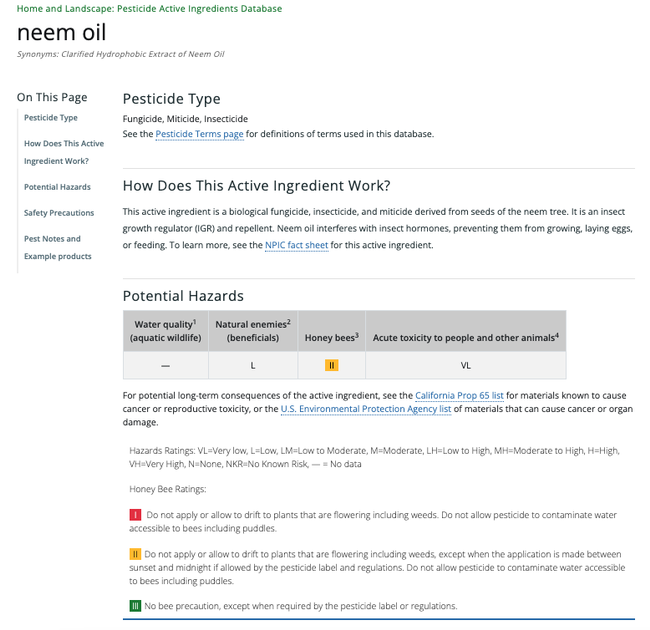The University of California Statewide IPM Program (UC IPM) has an exciting, newly updated resource to help you better understand pesticide active ingredients and the risks different active ingredients pose to people and the environment.
The Pesticide Active Ingredient Database is designed for urban audiences including the general public, Master Gardeners, nursery and garden center staff, pest control operators, landscapers, and more. The active ingredients included in this database can be found in many commonly available pesticide products in California. The database contains a variety of pesticide types, including insecticides, herbicides, rodenticides, antimicrobial products, and more.
Each active ingredient in the database has its own page where you can learn what it is, how it works, and what pests it can control. You can also view example products available to the general public or licensed professionals, and a table displaying the potential hazards of the active ingredient. The potential hazards table includes toxicity information for water quality or aquatic wildlife, natural enemies, honey bees, and people or other mammals. A glossary of pesticide terms is available as well to help you understand pesticide terminology.
You can use this database to compare toxicity ratings of pesticides by clicking the “Compare Risks” link or button found on UC IPM's Pest Notes fact sheets. This will help you find the least-toxic pesticide active ingredients to control a specific pest.
We hope you find this newly updated resource helpful and share with others who may be interested.
[Featured in the Summer 2024 edition of the Home and Garden Pest Newsletter]
